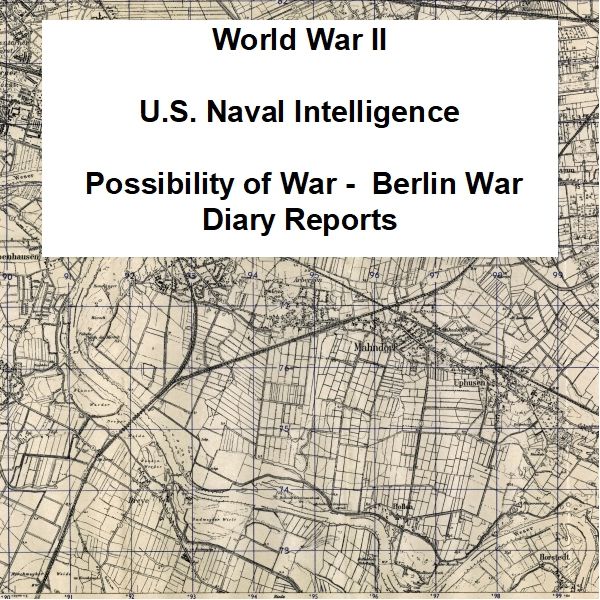
WWII Naval Intelligence – Berlin War Diary Reports on War Possibility
$19.50
Description
Naval Attaché Reports: European and Pacific Theaters, 1937-1943
Timeline of Main Events (1937-1943)
This timeline is compiled from the descriptions of the reports filed by U.S. Naval Attachés stationed in various European capitals and Tokyo between 1937 and 1943. The entries focus on events explicitly mentioned as topics of these reports and the periods they cover.
1937:
- Tokyo: Reports cover Japanese activities in China and Manchuria, including the Panay Incident in December.
1937 – 1939:
- London: Reports primarily focus on the expansion of the Royal Air Force and Royal Navy, including technical data on ships and planes related to rearmament.
February 1938:
- Berlin: A report discusses the relief of von Blomberg and von Fritsch due to the Army vs. Party struggle.
- Berlin: Reports cover the Anschluss of Austria.
August – September 1938:
- London: Detailed descriptions of preparations at the American Embassy for staff safety during the Czech crisis, including air-raid shelter construction, gas mask use, and evacuation procedures.
- Berlin: Extensive reporting on the mobilization in Germany during the Czech crisis.
November 1938:
- Tokyo: A report details the Tokyo attaché’s visit to Shanghai.
Late 1939 – Early 1940:
- Brussels: Reports express concern about a possible German invasion of Belgium, highlighting the importance of coastal and frontier defense.
September 1939:
- Rome: Reports begin to cover public feeling toward the war, Fascism, and Germany after the outbreak of World War II.
- Berlin: Reports after the start of the war discuss German naval organization, operations, and casualties.
- Brussels: Reports convey Belgium’s determination to stay out of the war.
- Paris: Reporting shifts towards overall French military strategy, policy, and operations.
1939 – 1940:
- Paris: Some evidence suggests poor Anglo-French military cooperation.
September 27, 1940:
- Tokyo: A report is titled “Japanese Air and Naval Based Within Range of Philippine [American] Operations.”
After 1940:
- Tokyo: Reports become broader, particularly those relating to U.S.-Japanese diplomatic relations.
April 5, 1941:
- Berlin: A report describes the German military buildup in the East and suggests an impending invasion of Russia as the likely reason.
June 1941 – October 1942:
- Paris: Summaries of dispatches discuss events during this period.
1941 – 1943:
- Moscow: Reports are dated during this period and contain information on Soviet naval strength and ship types.
1942 – 1943:
- Moscow: Summaries of dispatches include information on Soviet policy in the Far East.
May 1943:
- Moscow: A report describes the trip of an American naval officer from Seattle to Moscow via Alaska and Siberia.
Cast of Characters and Brief Bios
This cast includes the principal individuals whose actions or positions are directly referenced or implied as significant within the context of the naval attaché reports.
- Naval Attachés: These are the central figures, though their individual names are not provided in this excerpt. They were U.S. naval officers accredited to specific countries (London, Paris, Brussels, Rome, Berlin, Moscow, Tokyo). Their primary duty was to collect naval intelligence, reporting to the Office of Naval Intelligence in Washington D.C. They also gathered broader diplomatic, military, and political information.
- U.S. Diplomatic Mission Chiefs: While the naval attachés reported directly to the Office of Naval Intelligence, they were members of the U.S. diplomatic mission in their respective countries. The heads of these missions would have been aware of the attachés’ presence and activities, particularly concerning matters of staff safety during crises.
- Ernst von Blomberg: A German Field Marshal. His relief from a high-ranking position in February 1938, due to the Army vs. Party struggle, was significant enough to be reported by the Berlin naval attaché.
- Werner von Fritsch: A German Colonel General. Similar to von Blomberg, his relief in February 1938 was a notable event indicative of internal power dynamics in Germany.
- Staff of the American Embassy (London): During the Czech crisis of August-September 1938, the embassy staff were involved in preparations for potential conflict, including the construction of air-raid shelters and evacuation procedures. Their safety was a concern that prompted detailed reporting.
- Unidentified American Naval Officer: This officer undertook a trip from Seattle to Moscow via Alaska and Siberia in May 1943, the details of which were included in a report from the Moscow attaché.
World War II Naval Intelligence Possibility of War – Berlin War Diary Reports
3,241 pages of selected naval attaché reports relating to the world crisis, 1937-1943, from six major European capitals and Tokyo, relating to diplomatic, political, and military conditions.
A collection of dispatches From U.S. Naval Attaches which estimate or express any opinion regarding the probability or improbability of an outbreak of war, or which refer in any way to the estimates of potential military strength of the countries involved.
During this period (1937-43), a naval attaché accredited to a particular country or countries, served as a member of the U.S. diplomatic mission but was not a diplomatic officer. His paramount duty was collecting naval intelligence, and, in this regard, he received orders from the Office of Naval Intelligence in Washington, not from the chief of the American diplomatic mission of the country to which he was accredited. A naval attaché gathered information on the strength, organization, tactics, personnel, and technology of the naval forces of the countries to which he was assigned and also on broader diplomatic, military, and political matters.
In this collection are two subseries, “Estimate of Potential Military Strength” and “Probability of an Outbreak of War.”
Reports in the “Estimate of Potential Military Strength” subseries are:
A. London – Reports relate mainly to the expansion of the Royal Air Force and Royal Navy from 1937 to 1939. Technical data (number, cost, weight, and speed) of ships and planes are included with more general information on rearmament.
B. Paris – These reports are more politically oriented than the London reports. Many deal with French politics and military policy as reflected in the French press and in the Chamber of Deputies debates. Several are on the civil war in Spain and Spanish politics. A few reports describe such military topics as delays in aircraft production, the role of the French Navy in national defense, and the building of warships in Italy.
C. Brussels – These reports are mostly concerned with the organization and strategic policy of the Belgian Army. The importance of coastal and frontier defense is reflected in the concern about a possible German invasion in late 1939 or early 1940.
D. Rome – Reports from Rome cover a broad range of subjects: the aircraft and shipbuilding program; military operations in the Ethiopian campaign and during the first years of World War II; and internal conditions, including public feeling toward the war, Fascism, and Germany, after September 1939.
E. Berlin – These reports deal primarily with military subjects: construction, strength, armament, and organization in the German Army, Navy, and Air Force. Quite a few reports are concerned with German submarines. The mobilization in the fall of 1938, during the Czech crisis, is also extensively reported. The reports after September 1939 discuss such subjects as German naval organization, operations, and casualties.
F. Moscow – These reports are dated later (1941-43) than the reports from the other attaches. They contain information on Soviet naval strength and ship types, including copies of silhouette ship recognition charts. One report (F-1-3) describes the trip of an American naval officer in May 1943 from Seattle, Wash., to Moscow, via Alaska and Siberia.
G. Tokyo – These are detailed reports on Japanese naval activities, including strength, ships, personnel, pay, budget, building program, and potential for expansion. Some reports cover overall Japanese naval policy and naval cooperation between Japan and other powers, especially Germany and Italy. Others contain information on economic and financial matters in Japan, such as the Japanese oil situation. Still others describe Japanese activities in China and Manchuria, including a report (G-2-32) on a visit by the Tokyo attaché to Shanghai in November 1938. After 1940 the reports are broader in coverage, particularly those relating to U.S.-Japanese diplomatic relations. One interesting report (G-3-73), dated September 27, 1940, is entitled “Japanese Air and Naval Based Within Range of Philippine [American] Operations.”
The reports in the “Probability of an Outbreak of War” subseries are:
H. London – Included in these reports are detailed descriptions of the preparations at the American Embassy for the safety of the staff during the Czech crisis of August-September 1938. Construction of air-raid shelters, use of gas masks, and evacuation procedures are also described. Other reports discuss Nazi activities in Austria immediately following the 1938 Anschluss and the European political situation during the summer of 1939.
I. Paris – The attaché reports from Paris state French opinion on a variety of European diplomatic-political questions. They also transmit information from other European countries under such headings as “The International Situation from the Austrian Point of View” (I-1-6). Much of the reporting after September 1939 is on overall French military strategy, policy, and operations; some evidence shows that Anglo-French military cooperation during 1939-40 was poor. Although the last attaché report in this series (I-1-72) is dated August 6, 1940, five of the dispatches in the pertinent volume of summaries discuss events from June 1941 to October 1942.
J. Brussels – These reports convey the determination of Belgium to keep out of the war after September 1939. The reports also transmit information from other attaches on Finnish, French, Italian, and German views of the European situation.
K. Rome – Most of these reports relate to Italian relations with other European countries, both friendly and unfriendly. Several contain information exchanged among foreign military and naval attaches in Rome. After the outbreak of war, quite a few of the reports are on military operations. As do the reports in the D subseries, these reports include details about internal conditions in Italy, especially attitudes of the people.
L. Berlin – Reports before September 1, 1939, include much information on such subjects as Anschluss, Munich, and German-Soviet relations. There is some discussion of internal German politics; the first report (L-l-l) is about the relief of von Blomberg and von Fritsch as a result of the Army vs. Party struggle of February 1938. The reports after September 1939 relate more to military subjects, especially submarine operations. These reports also analyze and attempt to project future German intentions. The report for April 5, 1941 (L-1-28), for instance, describes the German military buildup in the East and gives an impending invasion of Russia as the likely reason for it.
Volumes 1 and 2 are entitled “Berlin War Diary” and cover the personal activities of the attaché as well as subjects of political and military significance. Information on weather, morale, holidays, rumors, war news, and visits to other European cities are entered in the diary.
M. Moscow – The three reports in this section are mostly personal observations on how to get along with the Soviets and contain little of real military or political significance. The 29 dispatches cited in the volume of summaries do include substantive information, especially on Soviet policy in the Far East during 1942-43.
N. Tokyo – Many of these reports discuss Japanese activities in China and Manchuria, including the Japanese-Soviet war of 1938, and analyze Japan’s intentions throughout the Orient. Several reports describe the Panay Incident of December 1937 and the Japanese response to it. Most of the 1940 and 1941 reports are concerned with Japanese reactions to American intentions and policies. Some consideration is given to internal Japanese politics, especially the role of the Army and Navy in making foreign policy.
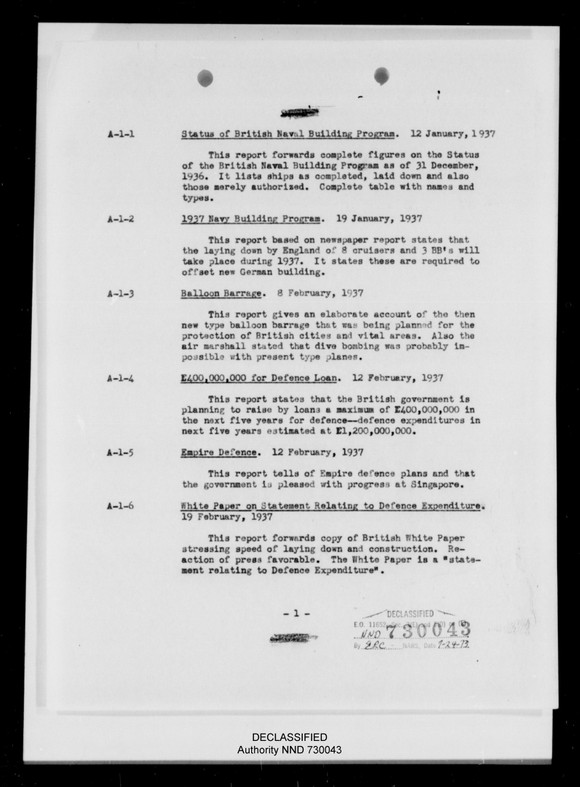
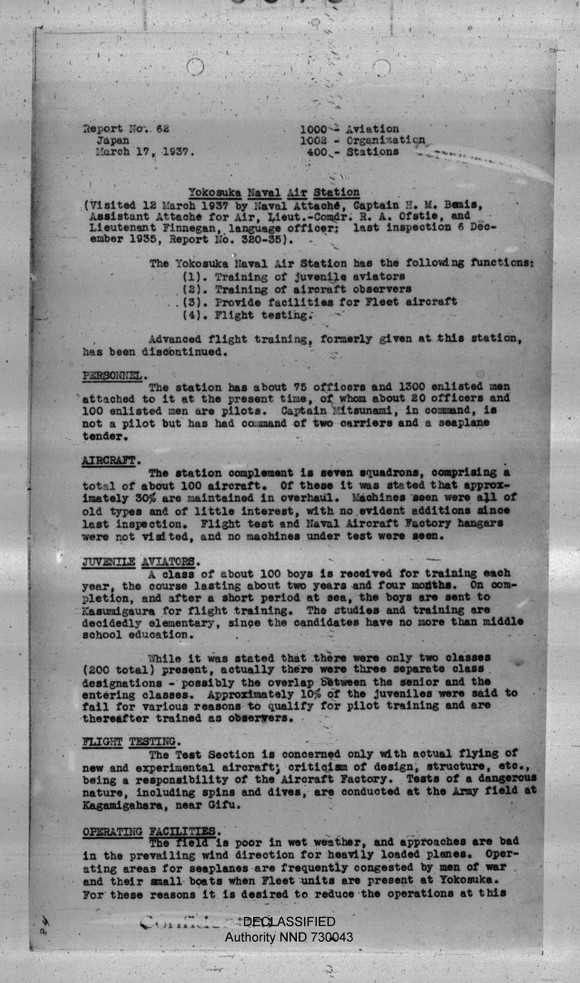
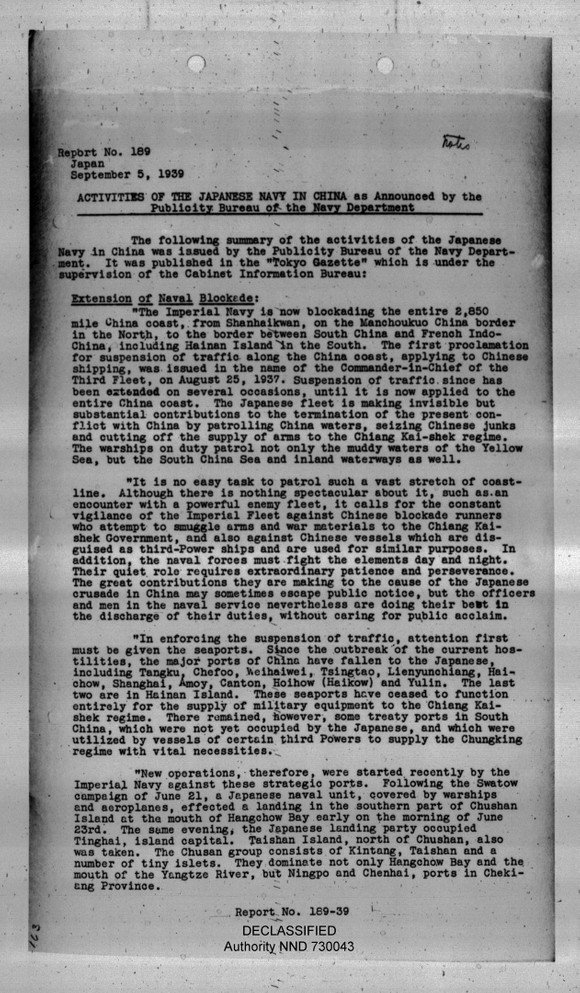
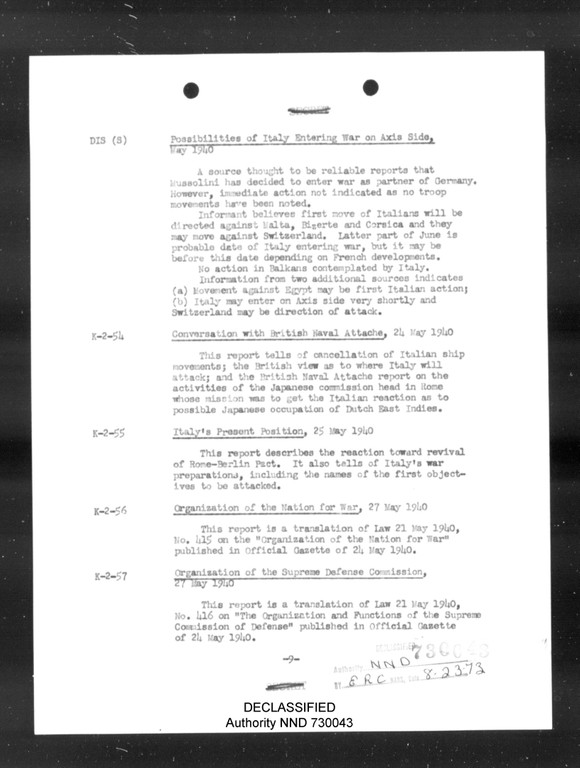
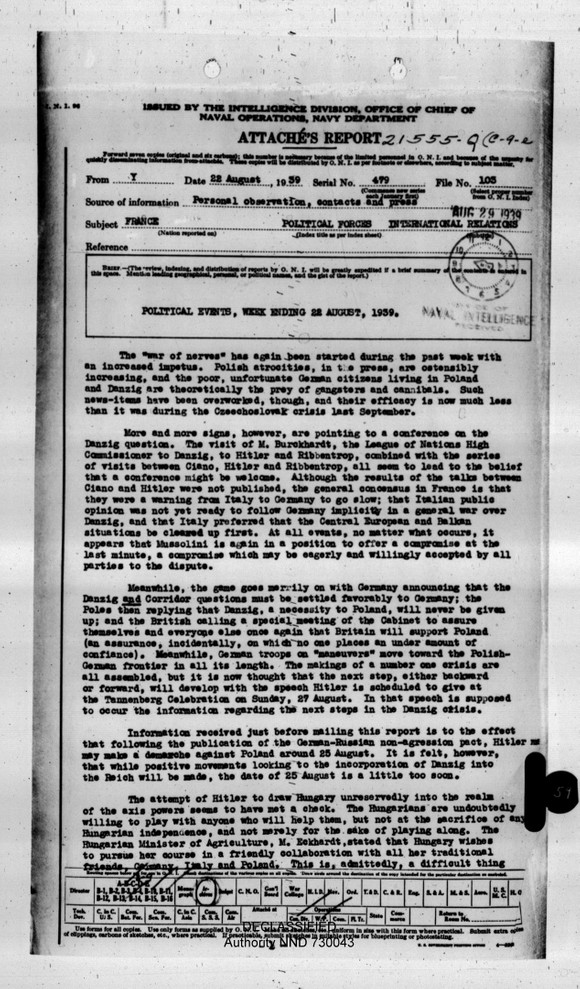

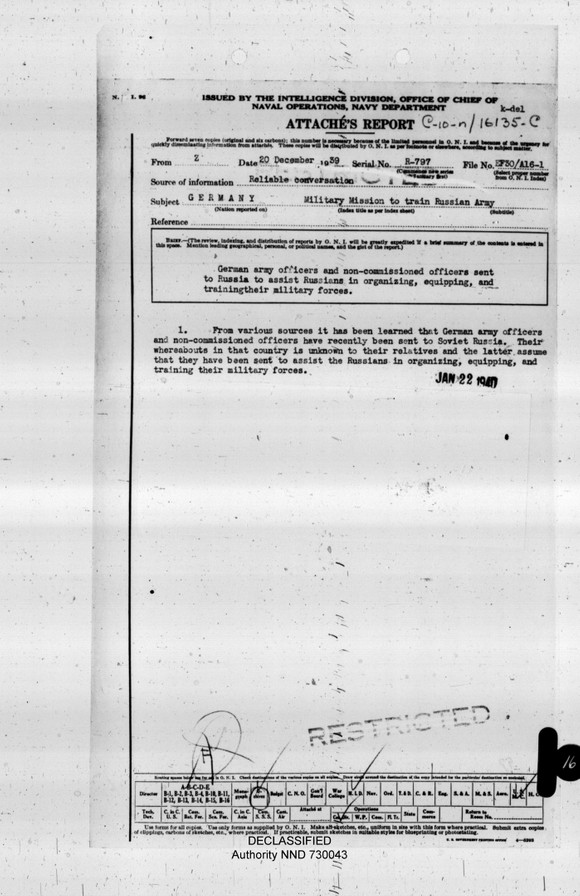

Related products
-
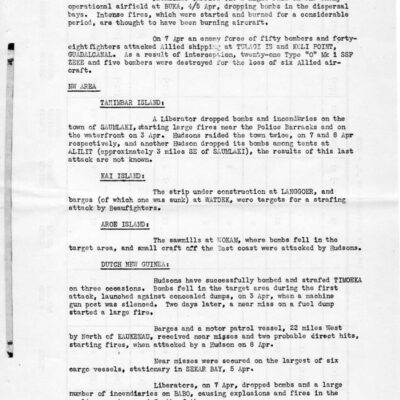
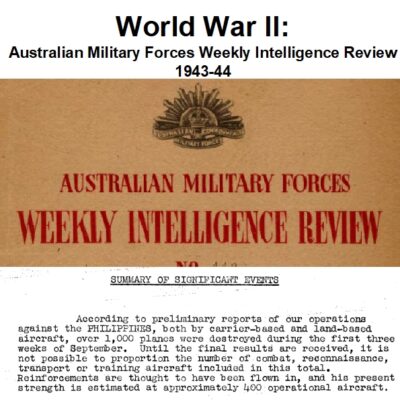
World War II: Australian Military Weekly Intelligence Reports 1943-44
$3.94 Add to Cart -
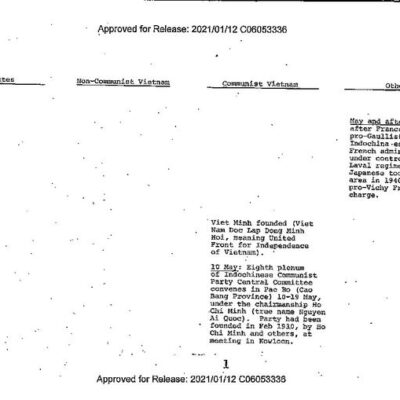
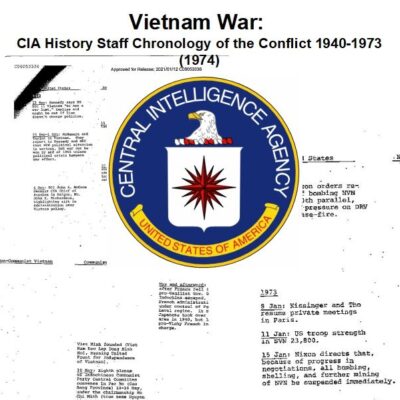
Vietnam War: CIA Chronology of the Conflict, 1940-1973 (1974)
$1.99 Add to Cart -
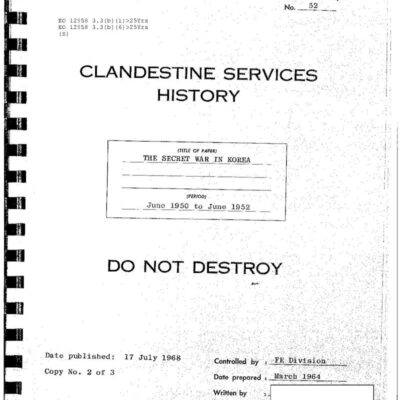
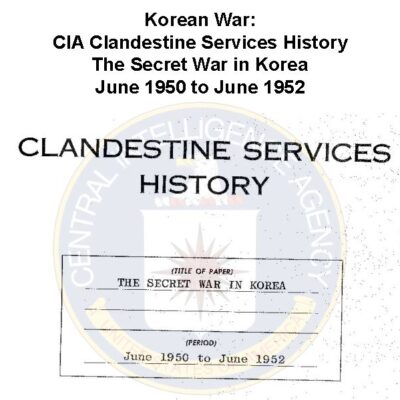
Korean War: CIA Covert Operations History – The Secret Conflict in Korea
$3.94 Add to Cart -
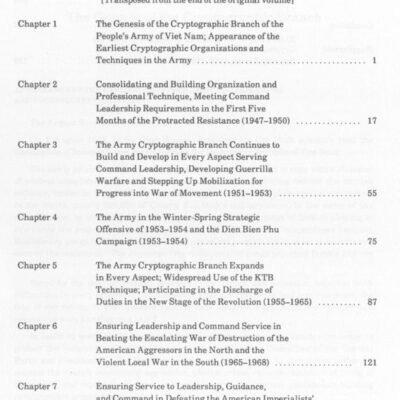

Vietnam War: Cryptology in North Vietnam – NSA Official History
$4.90 Add to Cart